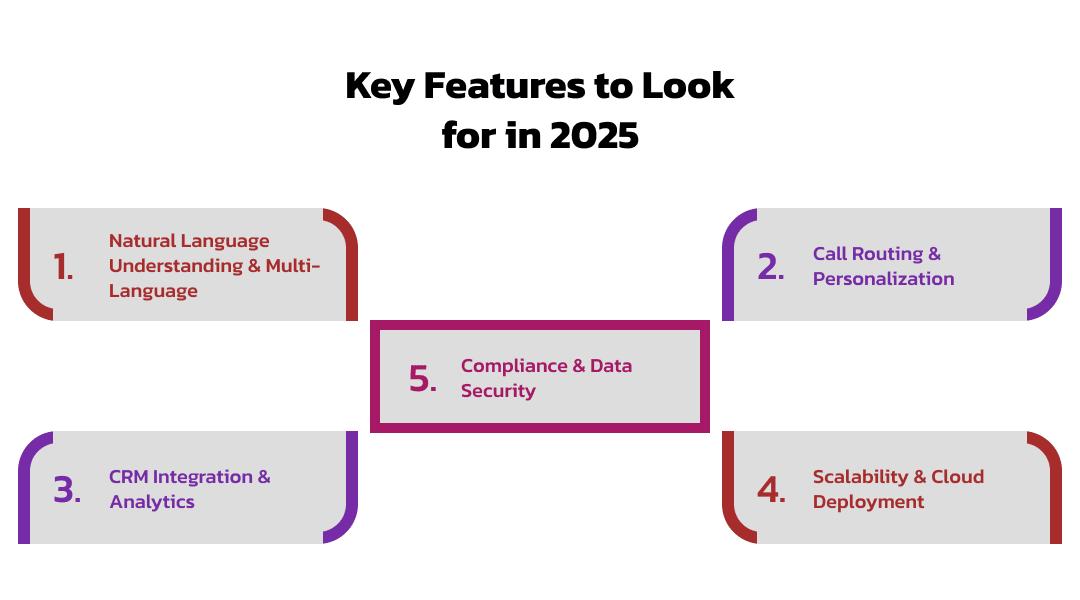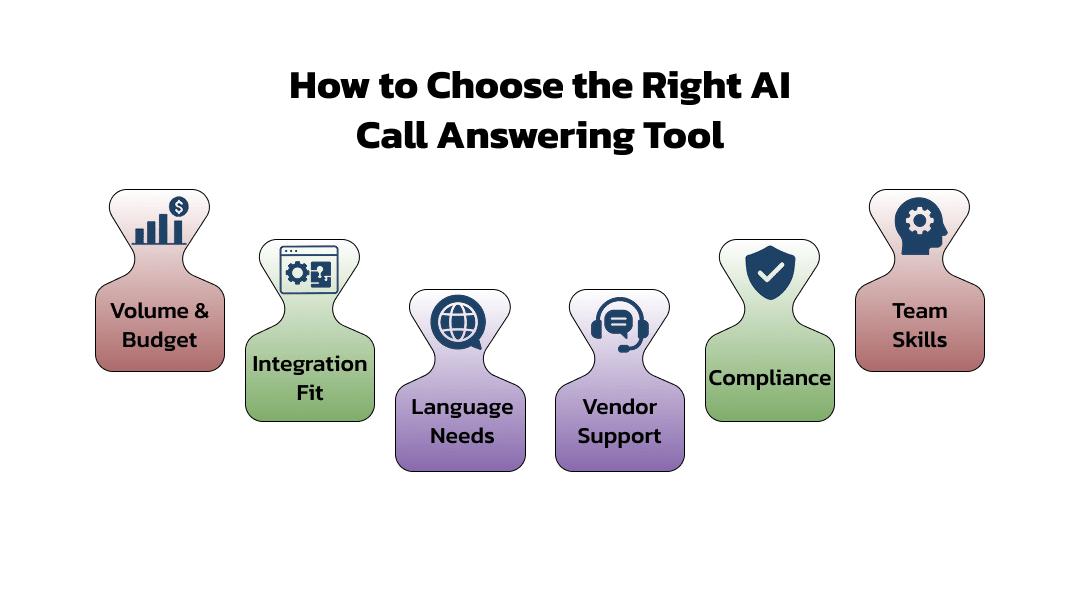Best Tools to Answer Customer Calls Automatically in 2025
Missed calls drain revenue. Every hour you or your staff spend repeating “Yes, we’re open until seven” is an hour not spent selling or solving problems.
That’s why so many organisations now work with a Best AI Voice Agent Agency to automate routine conversations. With the right tool, you don’t just answer calls — you capture leads, book slots, and resolve FAQs while your team focuses on higher-value tasks.
This guide explains the features that matter, profiles the leading platforms, compares them side-by-side, and shows how to roll them out so they actually stick.
Key Features to Look for in 2025

1. Natural Language Understanding & Multi-Language
Good voice AI doesn’t just transcribe words — it understands intent, context, and tone. Expect:
Accurate recognition across accents and local dialects.
Support for multiple languages or code-switching in a single call.
Real-time intent detection rather than rigid menu trees.
2. Call Routing & Personalization
The best systems don’t leave callers guessing which number to press. They analyse who’s calling, why, and what data you already hold, then route or resolve:
Personalised greetings (returning vs. new customer).
Smart hand-offs to human reps when confidence is low.
Queue prioritisation for VIP or urgent cases.
3. CRM Integration & Analytics
An AI that can’t record outcomes is just an answering machine with attitude. Look for:
Two-way sync with CRMs (Salesforce, HubSpot, Zoho).
Real-time dashboards for metrics like average handle time, CSAT, and containment rate.
Exportable logs for compliance and training.
4. Scalability & Cloud Deployment
Start with one line, scale to hundreds:
Cloud hosting for elastic demand.
Local number support if you serve specific regions.
Simple admin tools to add agents or intents without re-engineering.
5. Compliance & Data Security
Voice data is sensitive. Check for:
PCI DSS for payments.
HIPAA (or local equivalents) for healthcare.
Encryption at rest and in transit.
Clear data-retention policies.
Top Tools to Answer Customer Calls Automatically in 2025
Below is a candid look at eight platforms I see most often. Each serves a different scale or skill set.
1) OnDial
Features: Pre-built inbound flows, local numbers, template-driven setup, voicemail transcription.
Pricing: Tiered packages aimed at small businesses; affordable monthly base with usage bands.
Ideal for: Local retailers, service shops, clinics, and small call centres that need fast deployment with minimal technical lift.
Pros: Quick to stand up; easy menus for owners; good reporting basics.
Cons: Limited advanced integrations; less suited for high-volume enterprises.
2) Amazon Lex
Features: Enterprise-grade speech recognition, streaming NLU, Connect telephony, serverless scaling.
Pricing: Pay per request and per minute; good when call traffic fluctuates.
Ideal for: Teams with developers who want granular control and AWS reliability.
Pros: Huge scalability, security, deep ecosystem.
Cons: Requires technical skills; billing can surprise if you don’t monitor minutes.
3) Five9
Features: Virtual agents blended with live support, voice + chat channels, workforce tools.
Pricing: Subscription tiers; often bundled with Five9’s cloud contact centre.
Ideal for: Mid-to-large centres handling thousands of calls daily.
Pros: Mature analytics, smooth live-agent transfers, proven uptime.
Cons: Higher cost, longer procurement and onboarding.
4) Twilio
Features: APIs for programmable voice, Studio visual flows, Flex for agent desktop.
Pricing: Pay-per-minute telephony + platform usage.
Ideal for: Organisations wanting to build bespoke call bots or integrate voice into custom apps.
Pros: Maximum flexibility, strong developer community.
Cons: No ready-made “Autopilot” product anymore; all custom.
5) RingCentral
Features: Automated greeting, call answering, routing, and transcription inside RingCentral’s phone platform.
Pricing: Often bundled with RingCentral MVP or Contact Centre plans.
Ideal for: Companies already running RingCentral phones.
Pros: Native fit; simple admin.
Cons: Fewer advanced NLU options; less control over model tuning.
How to Choose the Right AI Call Answering Tool

Volume & Budget: Estimate monthly minutes. Multiply by projected automation rate to see if pay-as-you-go or subscription makes sense.
Integration Fit: Match with your CRM, ticketing, or ERP. Manual copy-paste kills ROI.
Language Needs: Check accent coverage — especially for multilingual markets.
Compliance: If you take cards or health info, shortlist tools with PCI/HIPAA ticked.
Team Skills: Low/no-code if you lack developers; otherwise choose an API-rich stack.
Vendor Support: Look for pilots, sandbox numbers, clear SLAs.
Implementation Tips for Maximum ROI
Start Small: Pick one call type — e.g., hours, appointments, or balance checks.
Script Humanly: Use natural phrasing, not robotic menus.
Human Backup: Give callers an easy way to reach a person if confidence drops.
Train Weekly: Feed real transcripts back to improve accuracy.
Track KPIs: Containment rate, CSAT, first call resolution, and handle time.
Iterate: Expand intents only after the first few stabilizes.
Future Trends Beyond 2025
Generative replies: Bots drafting call summaries, follow-up emails, and knowledge-base updates instantly.
Emotion & sentiment detection: Prioritising frustrated callers automatically.
Unified channels: Voice, chat, email, and social sharing context so customers repeat nothing.
Smarter call routing: AI predicting not just what someone wants, but which agent solves it fastest.
Conclusion
Answering every customer call quickly isn’t just good service — it’s revenue protection. The right platform can greet callers, route them intelligently, and even complete transactions while your team handles higher-value work.
In 2025, choosing a reliable AI Voice Agents Company or partnering with the Best AI Voice Agent Agency helps you deploy solutions that grow with your business. Modern AI Call Agents don’t just take messages; they deliver 24/7 availability, consistent quality, and measurable ROI.
Start by mapping the conversations you want to automate, shortlist tools that meet your security and integration needs, then pilot on a small call flow. From there, scale gradually and track KPIs like CSAT, AHT, and first-call resolution.
Investing in smart call-answering technology today ensures you never lose another opportunity to a busy line or after-hours voicemail — and sets you apart as a brand that values every customer moment.
FAQs
AI Call Agents are voice-based systems that answer and manage incoming calls using speech recognition and conversation models. They greet callers, capture details, and route or resolve issues without needing a live agent.
If you only need technology, a subscription platform may be enough. But when you want strategy, training, and custom flows, partnering with an experienced AI Voice Agents Company or the Best AI Voice Agent Agency adds long-term value.
Yes, leading platforms follow strict standards like ISO and GDPR. Always verify encryption, access controls, and regional compliance to keep sensitive caller information safe.
Launch a pilot with a single workflow, measure customer satisfaction and handle time, refine weekly.
Prices vary by call volume, language support, and hosting model. Small businesses may spend a modest monthly fee, while enterprises working with a Best AI Voice Agent Agency pay for custom training and analytics.

CEO
